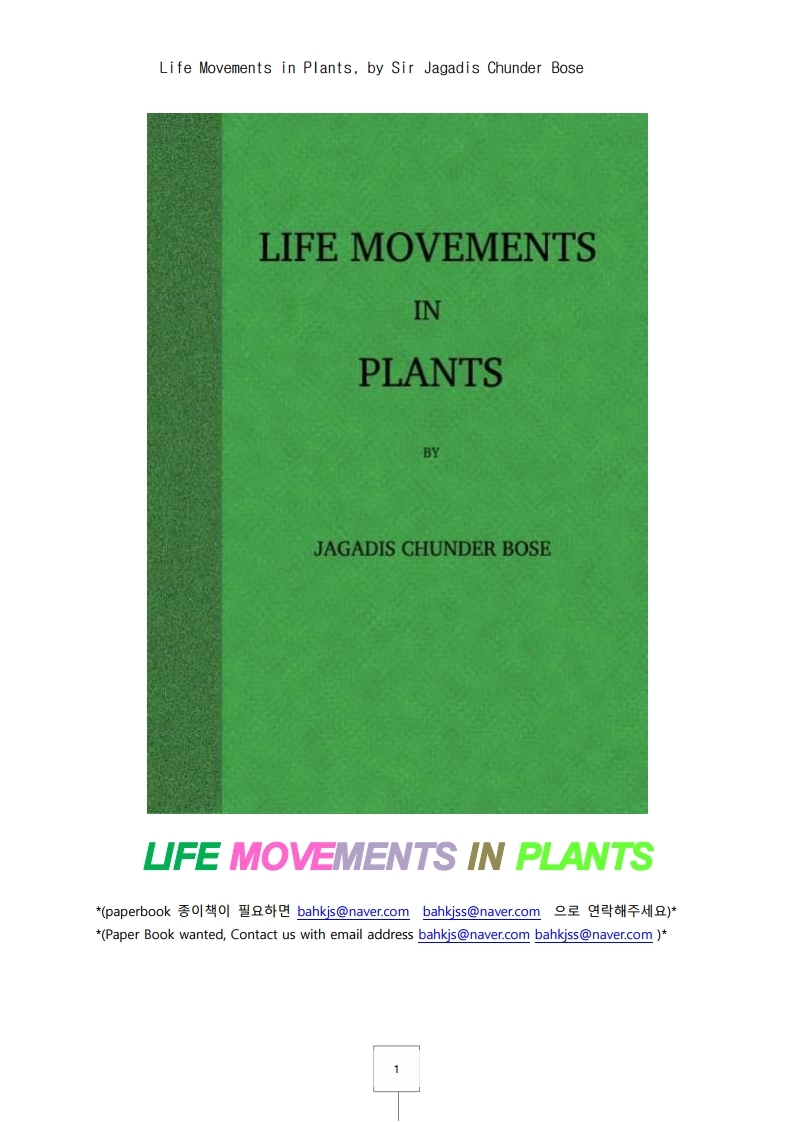식물 체의 움직임.Life Movements in Plants, by Sir Jagadis Chunder Bose
CONTENTS
PART I.
RESPONSE OF PLANT ORGANS.
I.―THE PROBLEM OF MOVEMENT IN PLANTS.
PAGE
Complexity of the problem―Effects of different forms of stimuli―Diverse
responses under identical stimulus―Modification of response determined by
intensity and point of application of stimulus, and tonic condition of organ―
Response of pulvinated and growing organs―Necessity for shortening the period
of experiment1
II.―THE “ PRAYING” PALM TREE.
Description of phenomenon―The Recording apparatus―Record of diurnal
movement of the tree―Universality of tree movement―Cause of periodic
movement―Periodic movement of trees, and diurnal variation of moto- excitabil ity in Mimosa pudica―Relative effects of light and temperature―Physiological
character of the movement―Transpiration and diurnal movement―Diurnal
movement in inverted position―Effect of variation of temperature on geotropic
curvature―Reversal of natural rhythm by artificial variation of temperature5
III.―ACTION OF STIMULUS ON VEGETABLE TISSUES.
III.―ACTION OF STIMULUS ON VEGETABLE TISSUES.
Different types of Response Recorders―Response of a radial organ―Response
of an anisotropic organ―Response of pulvinus of Mimosa pudica―Tabular
statement of apex time and period of recovery in different plants―Response of
pulvinus of Mimosa to variation of turgor―Different modes of stimulation31
도서소개
저자소개
목차소개





